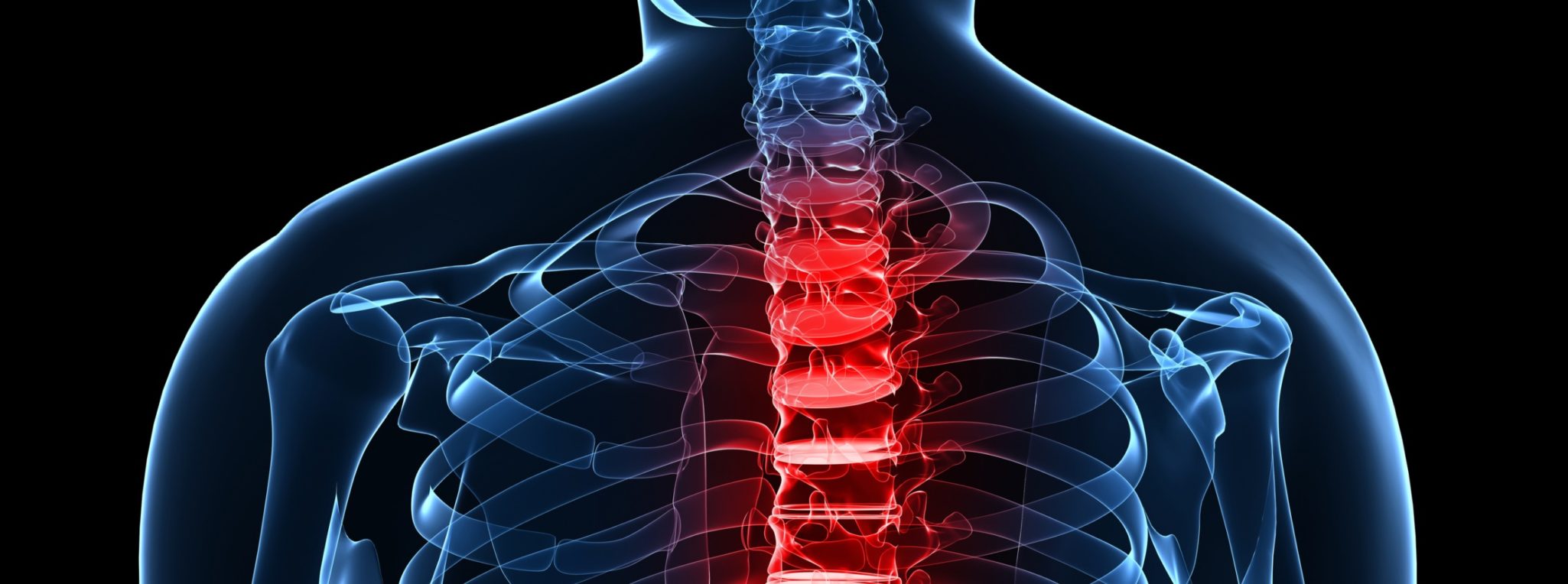Relieve Your Lower Back Pain with a Lumbar Laminectomy
A laminectomy, also called decompression surgery, is a surgical procedure designed to relieve the pressure and pain on the spine. A lumbar laminectomy is focused on the lower back, or lumbar region. This region is made up of the five lowest vertebrae (L1 – L5) that are just above the base of the spine, and supports the bulk of the weight of the upper body. It is the most common area of back pain.

What does a Lumbar Laminectomy Address?
The pressure on the spine comes from a condition called spinal stenosis. It is a narrowing of the spinal canal that puts pressure on the nerves and causes pain throughout the spine and extremities. It can develop as a result of bone spurs, osteoarthritis or even just from aging.
Who is an ideal candidate for a Lumbar Laminectomy?
When a vertebra develops a growth such as a bone spur within the spinal canal, it shrinks the space available for the spinal cord and the nerves. This can create pressure (compression) on those nerves that causes pain, weakness, or numbness that can radiate down the patient’s arms and legs. If not treated, the compression can lead to loss of function and permanent nerve damage.
A laminectomy may also be necessary in herniated disc surgery to gain access to the damaged disc.
At Texas Neurosurgery, we may recommend a laminectomy if:
- Conservative treatments such as physical therapy don’t improve symptoms
- You have muscle weakness or numbness that is making walking or even standing difficult
- You are experiencing loss of bladder and bowel control
How long does a Lumbar Laminectomy procedure take?
These procedures can last from one to three hours. The duration is directly related to how much of the lamina is being removed and if we are also performing fusion to stabilize the impacted vertebrae.
What are the risks involved with a Lumbar Laminectomy?
These are spinal procedures, but they have become relatively commonplace thanks to their lack of invasiveness and their success for relieving patients’ back and leg pain. Still, there are some risks.
Some complications may include blood clot formation, postsurgical infection, nerve damage, breathing problems, or adverse reactions to medication/anesthesia. Despite the risks, the great majority of laminectomy surgeries are successful and uneventful.
The main risk, per se, is that the procedure doesn’t fully relieve the patient’s pain and another procedure may be required down the road.
The Lumbar Laminectomy Procedure
A lumbar laminectomy is performed through the back of the spine under general anesthesia. Your surgeon will remove small section of bone that covers the back of the spinal cord, called the lamina.
They may also remove the spinous process, which are projections from the back of the vertebrae. The removal of the lamina and any bone spurs or disc fragments relieves the pressure on the spinal cord and nerves.
Sometimes this is done with a separate procedure for best results. Your neurosurgeon will discuss these other procedures in full detail during your consultation at our office in Dallas, TX.
Lumbar Laminectomy with Inter Body Fusion
This procedure is sometimes performed using interbody fusion, a form of spinal fusion in which a bone graft is placed between two adjoining vertebrae so that they heal as one solid bone. During interbody fusion, intervertebral discs between the two vertebrae are removed and replaced by plastic or metal spacers containing bone-graft material, which is implanted to maintain spinal alignment. Once the spacers are placed, the two vertebrae slowly fuse together, stabilizing the spine and eliminating pain. Although recovery from lumbar laminectomy is usually quick, complete recovery may take 6 to 8 weeks.
Lumbar Laminectomy with Arthrodesis
Arthrodesis (lumbar spinal fusion surgery) is performed to treat fractures, as well as to correct spinal instability caused by spinal stenosis, by joining two or more vertebrae in the lower back together.
Lumbar Laminectomy with Segmental Fixation
Segmental fixation involves placing, to correct instability and pain, metal screws and plates in certain areas of the lower spine. Segmental fixation also enhances the results of arthrodesis because the metal plates hold the vertebrae in place until new bone forms between them, which can take several months. Segmental fixation usually requires a long recovery period that will likely include physical therapy.

What is recovery like after a Lumbar Laminectomy?
Recovery after a lumbar laminectomy depends on the patient, but these are not overly difficult, or lengthy, recoveries. As with virtually any surgery, it helps if the patient has some degree of fitness heading into surgery, as it makes recovery easier and faster. Thanks to our minimally invasive methods, most patients can return home the same day they have their lumbar laminectomy.
We’ll see you back at our office in Dallas about two weeks after your surgery. A course of physical therapy will be required after a laminectomy. Most patients won’t need to have sutures removed, as we typically use internal sutures that dissolve over time.
For the first two weeks, your activity is limited to walking. We encourage you to walk as much as you are comfortable. During this time, you may go up and down stairs, with the use of a railing, and you may also sleep in a normal bed. You will have a five-pound lifting limit for the first two weeks. After two weeks you will be able to resume low-impact cardiovascular activities and increase the amount of weight you are lifting. Within a reasonable amount of time after surgery, you will have very few restrictions on your activities. Please be sure to discuss any specific questions with us in the office.
Will a Lumbar Laminectomy permanently relieve pressure in the spine?
When your Texas Neurosurgery neurosurgeon removes part or all of the lamina on your affected vertebra or vertebrae, he will also clear out the area of any other bone spurs and other debris. This will create space for the nerve roots that branch off the spinal cord which are being compressed. This compression is the source of your pain, whether the pain is in the back at that area or radiating down into the hips and legs.
When Dr. Barnett, Dr. Michael, or Dr. Bidiwala performs your laminectomy, these are permanent changes. Does that guarantee you’ll never have any pain? The lamina won’t be the source moving forward, but that doesn’t mean a spinal disc can’t create problems in the future. Of course, if spinal fusion was a part of your laminectomy, the disc has also been removed, so this cannot be a problem in the future.
"Dr. Barnett performed a laminectomy on my back. My surgery was very successful. Not only is Dr. Barnett highly skilled and successful in his work, he is a kind, compassionate, empathetic man who truly cares for his patients. He is alway there to help. His office staff is outstanding. They are very helpful and accommodating. I would recommend Dr. Barnett to anyone." -- Gloria M.
Why Choose Texas Neurosurgery for Lumbar Laminectomy
At Texas Neurosurgery, we understand that every patient's journey with spinal conditions is unique. Our skilled neurosurgeons, Dr. Chris Michael and Dr. Shaad Bidiwala, work closely with you and your primary care physician to develop the most effective treatment plan—whether that involves conservative care, minimally invasive surgery, or a more advanced spinal procedure. We prioritize patient education, ensuring you and your family fully understand your condition and treatment options before making any decisions.
With decades of experience and leadership roles at top Dallas-area hospitals, the Texas Neurosurgery team provides the highest quality care. Whether you require a lumbar laminectomy or an alternative treatment, our approach is always personalized and patient-centered. Our dedicated staff, including physician assistants and clinic managers, are here to support you at every step, from initial consultation to post-operative recovery.
Frequently Asked Questions
How Should I Prepare for a Lumbar Laminectomy?
Preparation includes stopping certain medications (such as blood thinners) before surgery, following any fasting instructions, and arranging for transportation home after the procedure. Your doctor may recommend pre-surgical exercises to strengthen your core muscles and improve recovery. Creating a comfortable recovery space with easy access to necessities is also helpful.
What Is the Difference Between a Laminectomy and Spinal Fusion?
A laminectomy involves removing part of the vertebral bone, often for conditions like spinal stenosis. A spinal fusion, on the other hand, stabilizes the spine by permanently joining two or more vertebrae together, typically using bone grafts and hardware. While a laminectomy is a decompression procedure, spinal fusion focuses on stability.
Are There Non-Surgical Alternatives to Lumbar Laminectomy?

Yes, non-surgical options include physical therapy, medications (anti-inflammatory drugs, muscle relaxants), epidural steroid injections, and lifestyle modifications like weight loss and posture improvement. These treatments can help manage symptoms, but if nerve compression becomes severe and conservative methods fail, surgery may be necessary.
How Soon Can I Return to Work After a Lumbar Laminectomy?
Recovery time depends on the individual and the nature of their job. Patients may return in two to four weeks for desk jobs or light-duty work. Those with physically demanding jobs requiring heavy lifting or bending may need 8 to 12 weeks before resuming full duties.
Will I Need to Wear a Brace After Lumbar Laminectomy Surgery?
A brace is not always necessary after a lumbar laminectomy, but your surgeon may recommend one in cases of spinal instability or if you need extra support during the early recovery phase. If used, braces are typically worn for a few weeks to help with posture and healing.
Can Lumbar Laminectomy Be Performed on an Outpatient Basis?
Yes, in some cases, a lumbar laminectomy can be an outpatient procedure, meaning you can go home the same day. However, this depends on overall health, the severity of spinal compression, and whether additional procedures (such as a fusion) are needed. Many patients prefer outpatient surgery for quicker recovery in the comfort of their own home.
Is Lumbar Laminectomy the Best Treatment for Spinal Stenosis?
A lumbar laminectomy is often the most effective surgical treatment for moderate to severe spinal stenosis, particularly if non-surgical treatments have failed. However, the best treatment depends on individual cases, and some patients may benefit more from alternative approaches such as minimally invasive decompression or spinal fusion.
Schedule a Consultation
Our experienced staff specializes in lumbar laminectomy and will gladly give you more information on the procedure, please call our office today with any questions you may have or to schedule an appointment.

